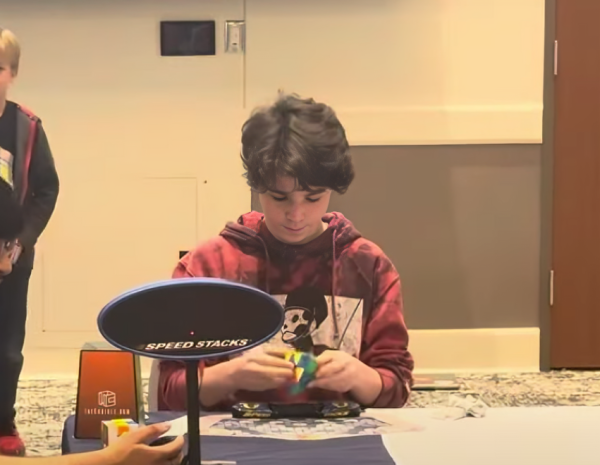The Oakland County Child Killer, Part One: The Murders
Check out this all-new three-part series detailing the eerie story of the Oakland County Child Killer.

March 21, 2018
With more and more frightening events happening across the world, it is quite comforting to live in a place like Oakland County. After all, it’s a relatively safe area. But if one were to dig deeper than face value, they would discover something shocking. Few residents today remember the serial killer that may still be prowling the streets of Metro Detroit.

From February of 1976 to March of 1977, the Oakland County Child Killer abducted and murdered four children. The thirteen-month killing spree made national headlines, and became the largest murder investigation in the history of the United States at the time. The Detroit News even put a $100,000 bounty on the killer’s head. Despite all of the media coverage, the Oakland County Child Killer was never caught or even identified.
On February 15, 1976, Mark Stebbins, a twelve-year-old from Ferndale, left an American Legion Hall. He was walking home to watch television. He never made it there. Four days later, his dead body was found in a parking lot at Ten Mile Road and Greenfield. It was placed neatly in the snow. He had two deep cuts in his head, and was dressed in the clothes he had been wearing days before; the clothes, it seemed, had been washed and cleaned.
The next victim was Jill Robinson, a twelve-year-old from Royal Oak. On December 22, she ran away from home after an argument with her mother. The next day, her bicycle was found behind a hobby store. Her body was found three days later, on the side of the interstate in Troy. She had suffered a shotgun wound to the head. She was wearing her backpack and dressed in her own clothes, which had been cleaned, just like Mark’s.
The next two victims, Kristine Mihelich and Timothy King, both met similar fates; they were found in Franklin Village and Livonia on January 21, 1977 and March 22, 1977, respectively. Their clothes had been washed, and their bodies were placed neatly and in clear sight. Timothy’s skateboard had even been placed next to his head.

After the third murder, Detroit police found that the evidence in all three cases were similar. This led them to realize that they were dealing with related cases—a serial killer. The police informed the media of this possibility. A task force of two-hundred people was created to find the killer. Soon, a drawing of the suspected killer was created. One woman told police that she had seen a boy she suspected was Timothy King. According to her, he had been talking to a man in a drugstore parking lot. It was the exact same drugstore Timothy told his parents he was going to on his skateboard. The woman also remembered the man’s car, a blue AMC Gremlin. A picture of the car was released along with the drawing of the suspected killer. To this day, Detroit police still question anyone driving a blue AMC Gremlin.
Unfortunately, it is not likely that the Gremlin actually belonged to the killer or anyone involved. Hours after Timothy’s disappearance, his older brother, Chris, went looking for him in the drugstore parking lot. He found a blue AMC Gremlin sitting there, which meant that the infamous car’s owner probably had nothing to do with the case. This revelation was revealed in 2017. Chris said, “All people seem to remember about this case is the blue Gremlin. It got so much attention. But that was always a very weak lead.” In 2013, parts of a blue Gremlin were found buried in Grand Blanc Township. The authorities launched a dig, but no additional clues were found.
Detectives knew what the killer looked like, according to witnesses who had seen him speaking with Timothy King. He was a white man, aged twenty-five to thirty-five, with shaggy hair and sideburns. Unfortunately, this description matched most men in the 1970s. In December of 1978, the task force reached its two-million dollar budget and hadn’t arrested a single suspect. It was forced to disband and hand the case over to the Michigan State Police.

The killings caused a wave of mass hysteria within the Metro Detroit community. Parents refused to let their children out of sight; they insisted on accompanying kids whenever they went outside.Concerned parents banded together to invent “safe houses”. These were houses owned by helpful members of the community that gave children a place to hide in if they felt scared. Parents would tell their children which houses were safe houses, so they would know where to hide.Innocent civilians’ cars were being pulled over left and right. The killings were always on everyone’s minds. Every time another child went missing, the panic was intensified. The citizens of Oakland County had never experienced anything like this before. Their once-peaceful atmosphere had shifted to one of fear, especially among parents. To a certain point, this generation has never recovered from the trauma. Kids used to play baseball outside and ride their bikes down the street. Now, parents keep a closer eye on their kids. While the killings eventually stopped and the hysteria died down, Oakland County was never quite the same.
Next week, read about the following police investigation and numerous suspects in Part Two of this three-part-series.












